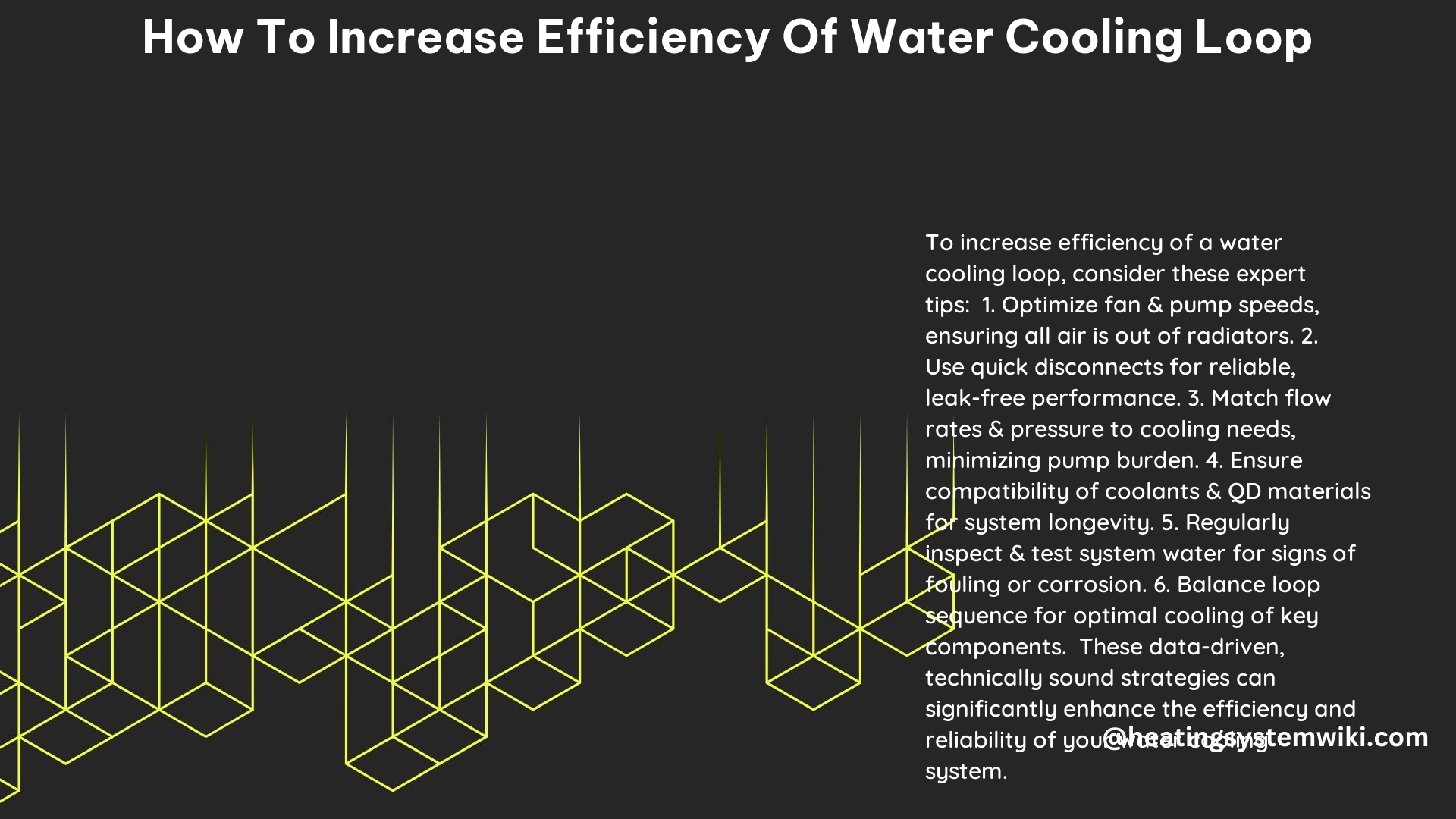Optimizing the efficiency of a water cooling loop is crucial for maintaining optimal system performance and preventing overheating. By considering various factors, such as loop sequence, water flow speed, and the use of high-quality components, you can significantly improve the efficiency of your water cooling system. In this comprehensive guide, we’ll explore the technical details and provide a step-by-step DIY approach to help you achieve maximum efficiency.
Loop Sequence Optimization
The order in which the components are arranged in the loop, known as the loop sequence, can have a significant impact on the system’s efficiency. While the exact sequence may not matter significantly, the most common configuration is:
- Pump -> Radiator -> CPU -> GPU -> Radiator -> Back to Pump
However, when overclocking both the CPU and GPU, the question arises: which component should receive the coolest water? This decision depends on your specific system requirements and personal preferences. Experimenting with different loop sequences can help you determine the optimal configuration for your setup.
Water Flow Speed Optimization

Water flow speed is a critical factor in increasing the efficiency of a water cooling loop. The water pump speed is the most important element in maintaining low temperatures. According to independent testing, there can be a temperature difference of up to 20°C when running the pump at low speed (1000 rpm) versus maximum speed (3400 rpm) under a full load torture test. This demonstrates the significant impact that pump speed has on the water temperature within the loop.
To optimize water flow speed, consider the following:
- Measure the flow rate using a flow meter to ensure the loop is operating at the recommended level.
- Adjust the pump speed to find the optimal balance between flow rate and temperature.
- Experiment with different pump models or configurations to achieve the desired flow speed.
Quick Disconnect Optimization
Quick disconnects play a crucial role in ensuring reliable and leak-free cooling system performance. Independent testing has shown that quick disconnects of the same size can deliver significantly different flow performance. For example, a recently released 1/8-inch quick disconnect exhibited a 23% better flow rate (flow coefficient: CV=0.37) compared to other currently available 1/8-inch connectors.
This higher flow capacity reduces the pressure drop through the connector by an average of 34%, minimizing the burden on cooling system pumps and optimizing overall performance. When selecting quick disconnects for your water cooling loop, prioritize those with high flow rates and low pressure drops to maximize efficiency.
Closed-Loop Maintenance and Optimization
In addition to the factors mentioned above, maintaining the efficiency of a closed-loop water cooling system is essential. Neglected closed loops can become a significant drain on energy usage, with the problem only worsening over time. To recapture the efficiency of your closed heating or cooling system, consider the following steps:
-
Visual Inspection: Regularly inspect the water in your closed loop. If the water appears discolored or contaminated, it likely indicates a problem that needs to be addressed.
-
Makeup Water Volume and Source Chemistry: Understand the volume of makeup water required and the chemical profile of your source water. This information will help you determine the appropriate corrosion inhibitor and biocide formulas and ratios to maintain peak efficiency.
-
Solid Removal: Unwanted solids, such as iron oxide, calcium hardness, or remnants of biological activity, can rob your system of thermal efficiency. Regularly clean and flush the loop to remove these contaminants.
-
Loop Cleaning: Perform regular cleaning of the entire loop by flushing it with water and using a cleaning solution to remove any built-up deposits or debris.
-
Flow Meter Monitoring: Install a flow meter to monitor the water flow rate in your loop and ensure it is operating at the optimal level.
By following these steps, you can maintain the efficiency of your closed-loop water cooling system and prevent it from becoming a drain on your energy usage.
DIY Approach to Increasing Efficiency
To increase the efficiency of your water cooling loop, consider the following DIY steps:
-
Optimize Loop Sequence: Experiment with different loop sequences to find the configuration that works best for your specific system. This may involve rearranging the order of components to ensure the coolest water reaches the most critical components.
-
Monitor Water Flow Speed: Use a flow meter to measure the water flow rate in your loop. Adjust the pump speed as needed to maintain the optimal flow rate for your system.
-
Upgrade to High-Quality Quick Disconnects: Replace any existing quick disconnects with high-quality models that offer a higher flow rate and lower pressure drop. This will reduce the burden on your cooling system pumps and improve overall efficiency.
-
Perform Regular Maintenance: Regularly clean and flush your water cooling loop to remove any built-up debris or contaminants. This will help maintain the system’s thermal efficiency and prevent performance degradation over time.
-
Utilize a Flow Meter: Install a flow meter to continuously monitor the water flow rate in your loop. This will allow you to make adjustments as needed to ensure the system is running at the optimal efficiency.
By following these DIY steps, you can significantly improve the efficiency of your water cooling loop and ensure your system remains cool and stable, even under heavy loads.
Reference:
- https://www.reddit.com/r/watercooling/comments/wiwe30/loop_temp_seems_high_can_i_further_optimize/
- https://forums.tomshardware.com/threads/water-cooling-loop-sequence.3738134/
- https://www.overclock.net/threads/improving-loop-water-flow-speed-two-water-pumps-a-viable-option.1794033/
- https://www.powerelectronicsnews.com/how-to-improve-the-efficiency-and-reliability-of-liquid-cooling/
- https://hohwatertechnology.com/blog/five-ways-to-increase-the-efficiency-of-your-closed-loop-system/
